Are you struggling to simplify the Ichimoku Cloud Indicator for more effective trading decisions?
Discover the 7 best steps that can help you navigate and optimize this powerful tool.
From grasping the basics to mastering advanced techniques, each step holds the key to unlocking the full potential of the Ichimoku Cloud Indicator.
Stay tuned to uncover the essential strategies and insights that can elevate your trading game to new heights.
Understanding Ichimoku Cloud Basics
To grasp the fundamentals of the Ichimoku Cloud indicator, one must delve into its core components and their significance in technical analysis.
The Ichimoku Cloud, also known as the One Glance Equilibrium Chart, consists of key elements like Tenkan-sen, Kijun-sen, Senkou Span A and B, and Kumo.
The Kumo thickness within the cloud acts as a visual representation of support and resistance levels, indicating the strength of these zones.
Understanding these components is essential for effective trading analysis, as they provide valuable insights into market trends and potential entry or exit points.
Simplifying Ichimoku Cloud Components
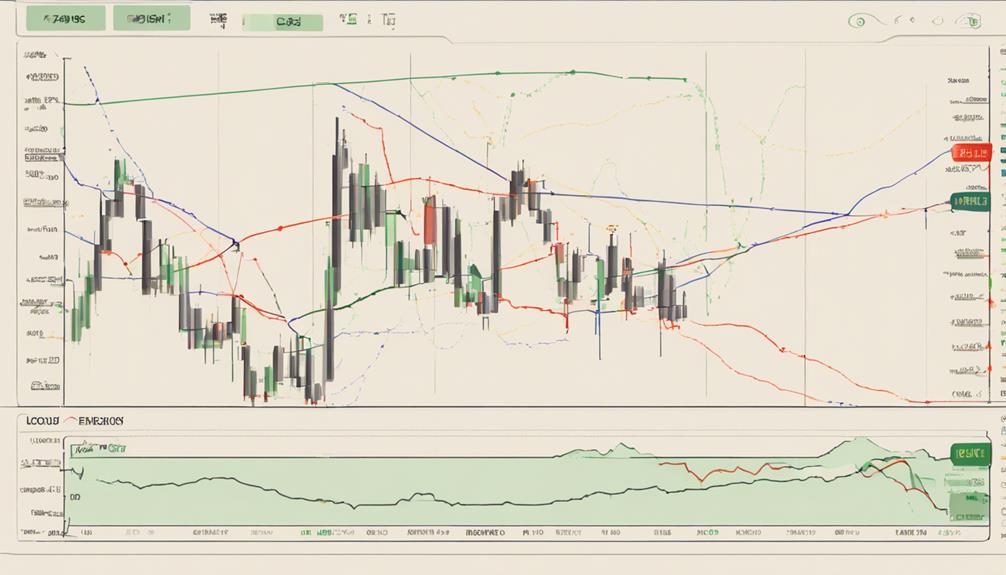
Understand the key components of the Ichimoku Cloud indicator, such as:
- Tenkan-sen
- Kijun-sen
- Senkou Span A and B
- Chikou Span
Simplify your analysis by focusing on the color of the cloud to determine trend direction:
- Red indicates bearish
- Green signals bullish
Use crossovers between Tenkan-sen and Kijun-sen as primary signals for your entry and exit points.
Key Cloud Components
Exploring the key components of the Ichimoku Cloud indicator simplifies its analysis and enhances decision-making in trading strategies.
The Tenkan-sen represents the 9-period average of high and low prices, while the Kijun-sen signifies the 26-period average of high and low prices.
Senkou Span A is formed by the average of Tenkan-sen and Kijun-sen, creating the first cloud boundary, and Senkou Span B is the second cloud boundary generated by the 52-period average of high and low prices.
The Chikou Span indicates the current closing price shifted back 26 periods for trend confirmation. Understanding these components aids in better interpreting the market trends and making informed trading decisions based on Ichimoku Cloud analysis.
Simplified Analysis Techniques
By focusing on the Kumo cloud color for trend direction and utilizing the crossover of Tenkan-sen and Kijun-sen for entry/exit signals, you can simplify your analysis of the Ichimoku Cloud indicator. To streamline your trading approach, consider the following simplified analysis techniques:
- Focus on Kumo cloud color: Utilize green for uptrend and red for downtrend indications.
- Use Tenkan-sen and Kijun-sen crossover: Employ this for entry/exit signals.
- Consider Chikou Span position: Confirm trends by comparing it with price movement.
- Utilize essential components: Concentrate on Tenkan-sen, Kijun-sen, and Chikou Span.
- Emphasize basic signals: Avoid complexity by focusing on fundamental trend indicators.
Streamlining Ichimoku Cloud Interpretation
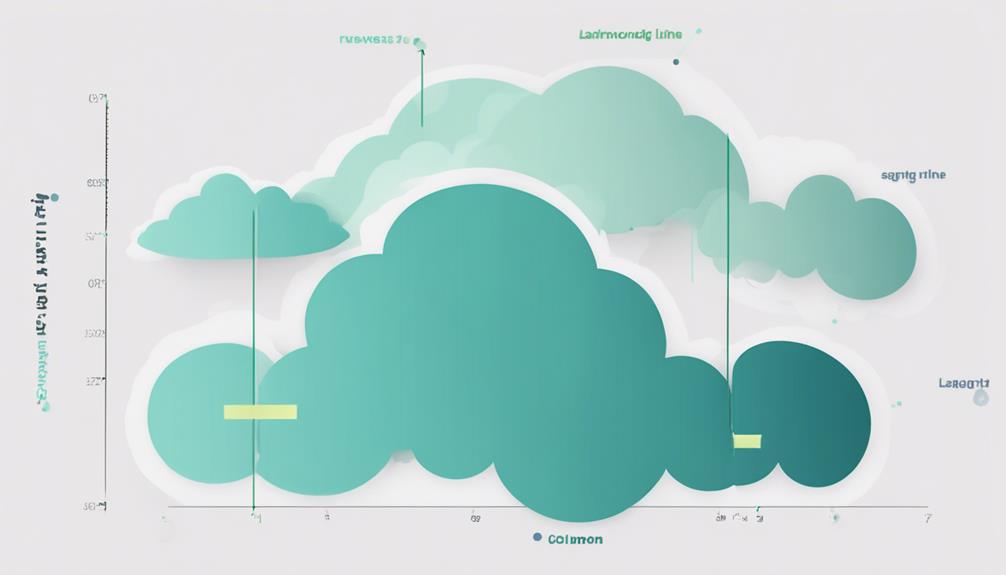
To streamline your interpretation of the Ichimoku Cloud indicator, focus on identifying trend direction using the cloud color as a key indicator. The cloud color can indicate whether the trend is bullish (green) or bearish (red), simplifying your analysis.
Look for crossovers between the Tenkan-sen and Kijun-sen lines for potential trading signals. Additionally, use the Chikou Span to confirm trends by comparing its position to the cloud.
Consider the thickness of the cloud, as it can provide insight into support and resistance levels. By concentrating on these elements, you can efficiently interpret the Ichimoku Cloud and make more informed trading decisions.
Implementing Ichimoku Cloud Strategies
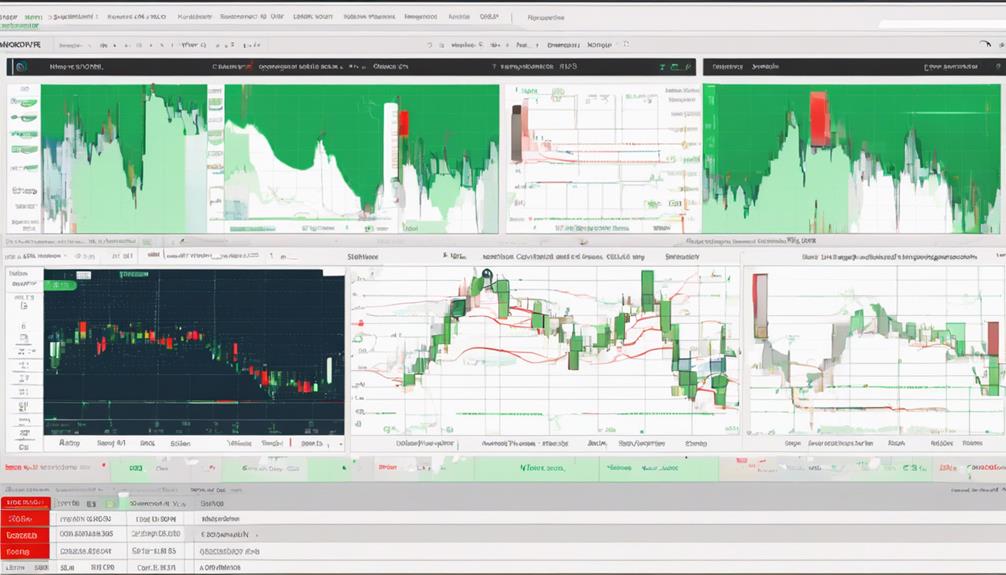
When implementing Ichimoku Cloud strategies, focus on utilizing components like Tenkan-sen and Kijun-sen for trend analysis.
Understanding cloud color changes is essential for determining trend direction in your trading decisions.
Look for Kijun Sen and Tenkan Sen crossovers to generate buy/sell signals effectively.
Strategy Examples
Understanding how to implement Ichimoku Cloud strategies involves analyzing key components like Tenkan, Kijun, Chikou, and Kumo to make informed trading decisions. When considering strategy examples, here are some key points to keep in mind:
- Utilize crossovers of components for buy/sell signals.
- Look for Kumo Breakouts and Twists for potential trend reversals.
- Combine Ichimoku signals with other indicators for trade confirmation.
- Backtest Ichimoku strategies to optimize performance in various market conditions.
- Evaluate trading performance regularly to adjust and refine your approach effectively.
Practical Application
To implement Ichimoku Cloud strategies effectively, grasp the components like Tenkan Sen, Kijun Sen, Chikou Span, and Senkou Span and harness their collective power for informed trading decisions.
Utilize these elements to determine the trend direction, aiding in making well-informed trade decisions.
Incorporate Chikou Span to confirm the trend direction and validate signals from other components.
Leverage Senkou Span as support and resistance levels, enabling the identification of potential reversals and refining entry/exit points.
Enhancing Ichimoku Cloud Trading Efficiency
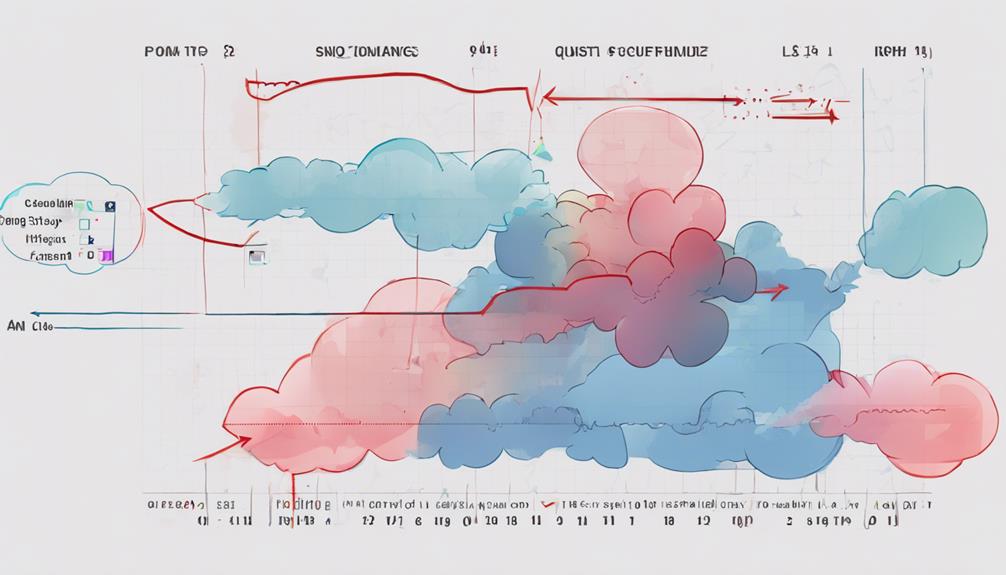
Enhance your Ichimoku Cloud trading efficiency by mastering key components and signals for strategic analysis.
- Utilize Tenkan-sen and Kijun-sen for trend analysis.
- Combine Chikou Span and Senkou Span to confirm trend direction and identify support/resistance levels.
- Adjust parameters based on market conditions for optimal trading efficiency.
- Practice backtesting and forward-testing strategies using historical data.
- Focus on key signals like crossovers and cloud breakouts for streamlined trading decisions.
Optimizing Ichimoku Cloud Signals
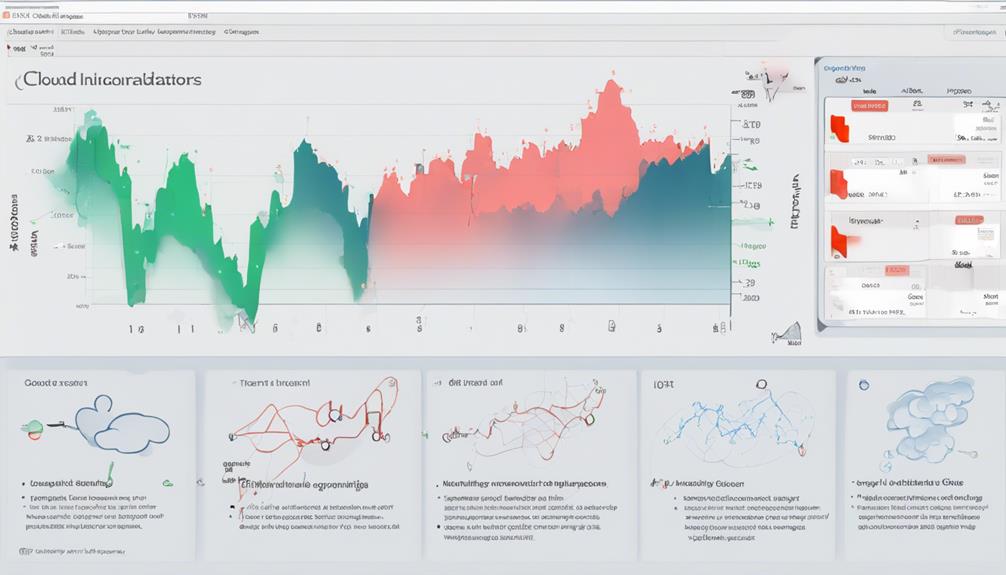
To further optimize your Ichimoku Cloud signals, focus on fine-tuning the key components and parameters for enhanced trading efficiency. Adjust the settings using standard parameters like 9, 26, 52 for Tenkan-sen, Kijun-sen, and Senkou Span.
Pay close attention to the Tekan Sen and Kijun Sen crossover for crucial trading signals. Utilize the Chikou Span to confirm trend direction and filter out false signals.
Enhance the effectiveness of Ichimoku signals by combining them with other technical analysis tools for better entry and exit decisions. Develop and refine your trading strategy through backtesting to optimize the application of Ichimoku Cloud signals in your trading routine.
Mastering Ichimoku Cloud Application
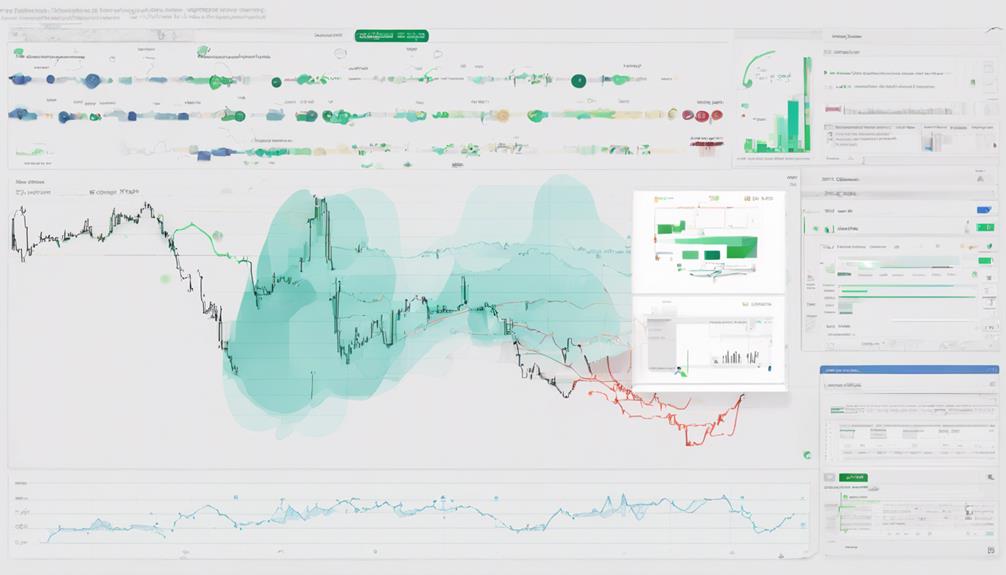
Mastering the application of Ichimoku Cloud involves analyzing key components and interpreting cloud color for effective trading strategies. Here are some essential steps to help you master the Ichimoku Cloud application:
- Understand the key components: Tenkan-sen, Kijun-sen, Senkou Span A and B, and Chikou Span.
- Interpret cloud color for trend direction and volatility.
- Use Chikou Span to confirm trend direction and Senkou Span for support and resistance levels.
- Combine different Ichimoku components to enhance trading decisions.
- Analyze cloud thickness, crossovers, and trend strength for effective strategies.
Can you simplify the Ichimoku Cloud Indicator in just a few steps?
The Ichimoku Cloud indicator may seem complex, but you can simplify Ichimoku Cloud indicator in just a few steps. First, understand the five elements of the indicator: the tenkan-sen, kijun-sen, senkou span A and B, and the chikou span. Next, use these elements to identify trends and potential support and resistance levels.
Frequently Asked Questions
What Is the Best Way to Use Ichimoku Cloud?
To use Ichimoku Cloud effectively, understand its components like Tenkan-sen and Kijun-sen. Analyze cloud color for trend direction. Look for crossovers for buy/sell signals. Confirm trends with Chikou Span. Utilize Senkou Span for support/resistance levels.
What Is the Best Indicator Combination With Ichimoku?
You want to amplify your trading game with Ichimoku? Look no further than pairing it with RSI for overbought/oversold hints, MACD for trend confirmation, Fibonacci for reversals, Stochastic for entries/exits, and Volume for price strength.
What Is the Best Timeframe to Use Ichimoku?
For the best results using Ichimoku Cloud indicator, focus on the daily timeframe. It offers clear trends and reduces signal noise. Experiment with shorter timeframes for more trades, but watch out for false signals. Weekly timeframes give broader trends but may have delayed signals.
What Is the Formula for Ichimoku Cloud Indicator?
So, you want to know the Ichimoku Cloud formula? Well, it involves Tenkan-sen and Kijun-sen averages shifted forward, creating Senkou Span A and B. The cloud's thickness? Just the diff between A and B.
Conclusion
In conclusion, mastering the Ichimoku Cloud Indicator involves simplifying its components and strategies to make informed trading decisions. By understanding the basics, interpreting signals efficiently, and optimizing trading techniques, you can enhance your trading success.
Remember to streamline your approach, stay consistent, and always be open to learning and adapting. With practice and dedication, you can navigate the complexities of the Ichimoku Cloud Indicator with ease.
Happy trading!
